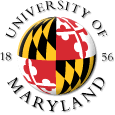| Overview |
| Client Application |
| QPC Console |
| System Requirements |
| Download |
| OnLine Help |
| Home |
ESIP Interoperability Demo
We have built a Java client application that addresses the data-interoperability needs of the NASA satellite archives, all of which are currently handled by the NASA Earth Science Information Partnership Federation (ESIP). We call this client application the Land Cover Visualization Tool. The University of Maryland houses a land cover ESIP site that includes the Global Land Cover Facility (GLCF) several terabytes of remotely sensed multi-sensor data, derived data products, and metadata about all these products. Our client application provides access to four data sources maintained by the GLCF. Three of these data sources contain metadata for Landsat Thematic Mapper (TM) , AVHRR, MARSH and CARPE data products. The last data source contains the binary image band data for the TM scenes, all which are stored within the IBM HPSS hierarchical file system.
Using the Land Cover Visualization Tool, the user can perform the following complex operations on the metadata and data products:
- Retrieve Landsat TM images and extract sub-images corresponding to a particular time interval and land region.
- Retrieve GIS vector data and construct a map of the land features corresponding to a particular region.
- Retrieve AVHRR images corresponding to a specific region, and combine them with GIS data by overlaying the GIS features on top of the AVHRR images.
- Dynamically extract sub-sets of TM bands corresponding to a specific region and time interval, and combine them into one TM scene using an user-defined composition function.
The user interacts with the Land Cover Visualization Tool through a GUI to execute all these operations and visualize their results.
This demo showcases MOCHA and the Land Cover Visualization Tool in action, allowing users to execute all the above operations and the same time, monitor the actions taken by MOCHA. The functional architecture for this demo is as follows:
- Client Application - The client application is the Land Cover Visualization Tool which the user runs from his/her local computer.
- QPC - The QPC is run from a server hosted by the GLCF.
- DAPs - There is a DAP for each data source, and these are run from various workstations located at or near the data sources.
NEXT
© 2000 University of Maryland. All rights reserved.

